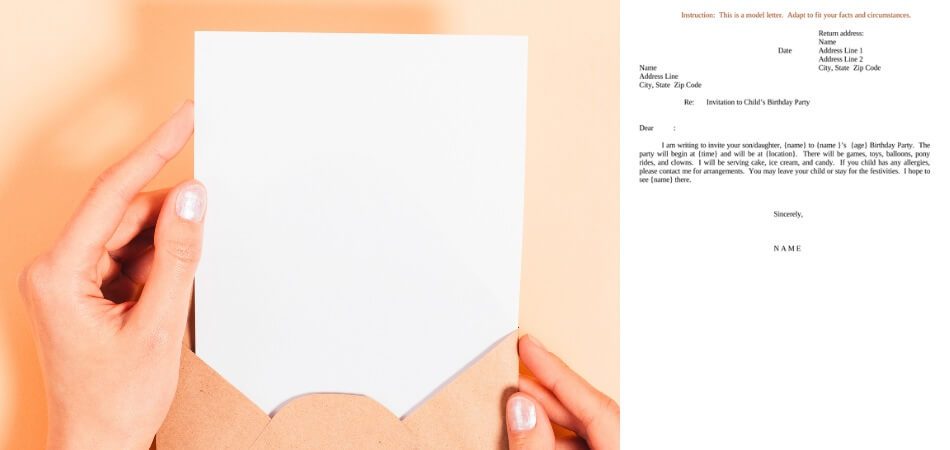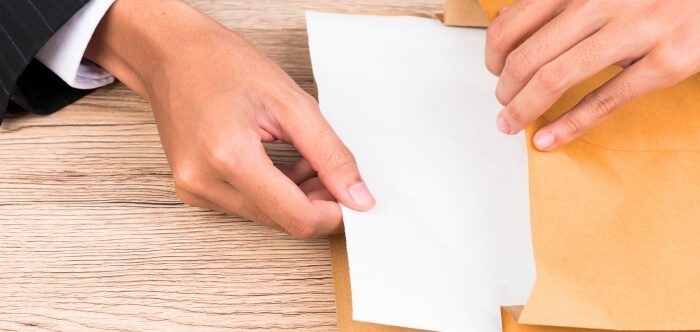An invitation letter is a warm and formal way to ask someone to attend an event or occasion. It’s a written invitation that provides all the necessary information and sets the stage for a memorable experience. If you’re planning to write one and are wondering about what is the format of invitation letter? you’ve landed in the right spot.
The format of an invitation letter can vary depending on the nature of the event or occasion for which you are extending the invitation and your personal preferences. In this format, you need to outline the event’s purpose, specifics, and attendee expectations. It includes a formal greeting, an assistance offer for visa processes, and contact information, ending with a signature and possibly an official stamp.
In this article, we’ll explore the key components and conventions that should be embraced when composing an invitation letter, ensuring that your invitations are not only informative but also convey the appropriate tone and warmth for the occasion at hand.
The Purpose of Invitation Letters
Letters of invitation are crucial, extending a warm and formal gesture to request someone’s presence at an event or occasion. Their significance goes beyond mere communication; they set the tone for memorable experiences and establish a sense of anticipation.
These letters create a bridge of connection between the host and the invitee, forging a sense of inclusion and importance. They convey the essence of the event, whether it’s a joyous celebration, a critical business meeting, or a community gathering. By detailing the event’s purpose and providing essential information, invitation letters ensure clarity and leave a lasting impression.
Moreover, invitation letters play a pivotal role in event planning and logistics. They help hosts estimate the number of attendees, ensuring adequate preparation for catering, seating, and any other event-related arrangements. The careful crafting of these letters reflects the host’s commitment to making guests feel valued and comfortable, setting the stage for a successful and enjoyable gathering.
What Is the Format of Invitation Letter?
When it comes to extending invitations for various events and occasions, understanding the precise format is paramount. What is the format of invitation letter? This question forms the main point of our discussion, as we explore the essential structure needed to create inviting and informative invitations that set the stage for successful gatherings.
Header and Contact Information
In an invitation letter, the header typically includes your name or your organization’s name, along with contact details like the address, phone number, and email. This information should be placed at the top of the letter to make it easy for recipients to reach out with any questions or concerns.
Date and Salutation
Below the header, include the date when the invitation is written, and then address the recipient with a formal salutation, using their name if possible. For instance, “Dear [Recipient’s Name]” adds a personal touch to the invitation.
Event Details and Purpose
The core of the invitation letter lies in this section. Clearly state the event’s date, time, and venue. Describe the purpose and significance of the event, whether it’s a wedding, business conference, or community fundraiser. This information sets the stage for what guests can expect.
Additional Event Information
Depending on the event, you might include additional details such as dress code, agenda, speakers, or any special activities planned. Providing this information helps guests prepare appropriately and builds anticipation.
RSVP Instructions
If you need guests to confirm their attendance, provide clear RSVP instructions. Include a deadline and specify the method for responding, whether it’s via email, phone, or an enclosed RSVP card. This ensures you have an accurate guest count for planning purposes.
Closing and Signature
Conclude the letter with a polite closing, such as “Sincerely” or “Best regards,” followed by your signature and typed name. This personal touch adds warmth to the invitation and leaves a positive impression on the recipient. A handwritten signature can further personalize the letter if desired.
Enclosures
If there are any additional documents, brochures, maps, or materials related to the event, mention them as enclosures at the end of the letter. Ensure that these supplements enhance the recipient’s understanding of the event and provide any necessary details.
Different Types of Invitation Letters
Invitation letters come in various forms, tailored to the specific purpose and audience. Understanding these different types can help you craft effective invitations for various occasions.
Social Invitation Letters
Social invitation letters are used for personal events like weddings, birthdays, or parties. They convey warmth and excitement, often with creative designs and personal touches, reflecting the celebratory atmosphere.
Business Invitation Letters
Business invitation letters are formal and typically used for corporate events, conferences, seminars, and meetings. They maintain professionalism and include essential details such as date, time, agenda, and RSVP instructions.
Event Invitation Letters
Event invitation letters are versatile and can be used for a wide range of gatherings, including cultural events, fundraisers, and community activities. They focus on conveying the event’s purpose and inspiring participation.
Workshop or Seminar Invitation Letters
Workshop or seminar invitation letters are specific to educational or informative events. They emphasize the benefits of attending, highlight guest speakers or topics, and include registration details.
Visa Invitation Letters
Visa invitation letters are formal documents used to invite individuals from foreign countries to visit for business or personal reasons. They must adhere to strict guidelines and typically include the host’s information, the purpose of the visit, and sponsorship details.
Formal Dinner or Gala Invitation Letters
Formal dinner or gala invitation letters are characterized by their elegant design and language. They are used for upscale events and often include details about dress codes, gourmet menus, and entertainment.
The type of invitation letter you choose depends on the occasion and your target audience. Tailoring the format and tone to match the event’s nature ensures that your invitations effectively convey the right message and set the appropriate expectations.
How to Organize an Invitation Letter?
Organizing an invitation letter effectively is crucial to conveying information clearly and making your guests feel welcome and informed. Follow these steps to create a well-structured invitation letter:
Step-1. Define the Purpose
Begin by clearly defining the purpose of your invitation letter. Determine whether it’s for a personal event, a business meeting, or a community gathering. Understanding the core objective helps you tailor the content appropriately.
Step-2. Gather Event Details
Collect all relevant event details, including the date, time, and location. Be specific about the venue’s address, and if applicable, include directions or a map to make it easy for recipients to find the location.
Step-3. Choose the Right Tone and Style
Consider the tone and style that best suits your event. For formal occasions, maintain a professional tone, while informal gatherings may allow for a more relaxed approach. Ensure the language and style align with the event’s nature.
Step-4. Compose a Clear Header
Create a clear header at the top of your letter. Include your name or organization’s name, along with contact information such as phone number and email address. This header provides essential contact details for recipients.
Step-5. Date and Salutation
Below the header, add the date when the invitation letter is written. Address the recipient with a polite salutation, using their name if known. Personalizing the greeting can create a welcoming atmosphere.
Step-6. Present Event Information
In the main body of the letter, present the event information logically. Include the date, time, and venue, followed by a brief description of the event’s purpose and any special activities or agenda items.
Step-7. RSVP Instructions
If you require a response from the recipient, clearly outline the RSVP instructions. Specify the deadline for responses and provide the preferred method of communication, whether it’s email, phone, or an enclosed RSVP card.
Step-8. Crafting a Polite Closing
Conclude the letter with a courteous closing statement, such as “Sincerely” or “Best regards.” Leave space for your signature, and type your name below it. A handwritten signature can add a personal touch.
Step-9. Mention Enclosures
If there are any additional documents or materials included with the invitation, mention them at the end of the letter. Label each enclosure clearly to assist the recipient in identifying and using them.
By following these organized steps, you can create an invitation letter that effectively conveys your message and ensures that your event is well-attended and enjoyed by all.
Bottom Line
Understanding how to format an invitation letter is essential for effectively sharing event details and setting the right tone. This article has thoroughly explored the question, “what is the format of an invitation letter?” It has provided insights into the various types of invitation letters, their purposes, and a practical step-by-step guide for organizing them.
Invitation letters serve as the key to bringing people together, whether for joyful celebrations, professional engagements, or informative gatherings. They bridge connections and create anticipation, making them vital in event planning and hospitality.
Whether you’re crafting warm and friendly social invitations or formal business invitations with a professional touch, understanding the structure ensures your messages are both informative and inviting. By following these guidelines and grasping the differences between various invitation letter types, you can create invitations that make a lasting impression and pave the way for successful and memorable events.








